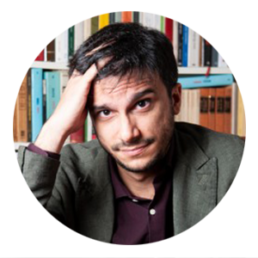CONCERTS 2026 | SYMPHONY
MICHELE MARIOTTI
WAGNER Lohengrin: Overture
SCHUMANN Piano Concerto in A minor, Op. 54
WAGNER Parsifal: “Good Friday Spell.”
WAGNER Tristan und Isolde: “Prelude and Death of Isolde.”
Program
Richard Wagner
Lohengrin: Overture
On November 1, 1871, the Teatro Comunale in Bologna was Wagner’s gateway to Italy. After long negotiations and exhausting preparations, encouraged by the mayor of the time Camillo Casarini, Angelo Mariani conducted
Parsifal: “Good Friday Spell”
Slow and troubled was the path of Wagner’s last opera, the most mystical, the most symbolic. For 30 years the Parsifal-Schutz clause denied the right to perform the opera outside Bayreuth. Despite some exceptions, the ban remained in effect until December 31, 1913. Then, as midnight struck, dozens of European theaters competed to be first on the monumental score. Barcelona’s Liceu won, staging the drama at the precise stroke of the new year. But Bologna did not have to wait long: on January 1, 1914, the Comunale was the first Italian theater to play the last visionary Wagnerian masterpiece, under the direction of Rodolfo Ferrari.
Tristan und Isolde: “Isolde’s Death Prelude.”
Shakespeare’s Sonnet 66 seems to anticipate the fate of Šostakovič, “the genius gagged by authority.” A fine artist, driven by a desire for independence and originality, he found himself facing the brutal power of Stalin and his paranoid, devouring dictatorship, which despised works of art not accessible to the general public, preferring to turn artists into propaganda tools, advertisers of his image and curators of the cult of his person. The Fourth Symphony runs on this cataclysm: Šostakovič wrote it in the two years that changed his life, from 1934 to 1936, in the span of time that took him from the resounding success of
Robert Schumann
Piano Concerto in A minor, Op. 54
There is no challenge between soloist and orchestra in Schumann’s only Piano Concerto: instead, there is a relationship, almost chamber-like, built on mutual listening and tension. Schumann, moreover, does not write a “concerto” in the usual sense, but in a new, more fluid form, where each gesture has expressive weight, “something halfway between symphony, concerto and grand sonata,” said the composer himself, “because I realize that I cannot write a ‘virtuoso’ concerto and that I must aim at something else.” So the piano enters immediately, decisively, as if surprised in a discourse that has already begun. The writing is nervous, poetic, never predictable. In the middle, a short, suspended Intermezzo; then the finale, which shines with an inner light. A masterpiece that seems to contain — like few others — the complexity, melancholy and indomitable soul of its author.
Orchestra of the Teatro Comunale di Bologna
45 min. before the start of the concert, the audience is invited to an in-depth discussion of the program by Luca Baccolini, which will be held on the lower floor of the Theater.
Luca Baccolini
journalist, music popularizer and writer, works with the Bologna editorial office of Repubblica and is on the editorial staff of the monthly Classic Voice. For Newton Compton he has published ten books on the history of Bologna. He is the author of theatrical subjects and collaborates as an essayist and popularizer with the most important Italian lyrical symphonic institutions.
SECTOR 1
Full: €45
Over65: €35
Reduced30-35: €30
U30: €25
SECTOR 2
Full: 40€
Over65: 30€
Reduced30-35: 25€
U30: 20€
SECTOR 3
Full: 35€
Over65: 25€
Reduced30-35: 20€
U30: 15€
SECTOR 4
Full: €15
Tickets at €10 for all students enrolled at the University of Bologna, the Academy of Fine Arts of Bologna and the G.B. Martini Conservatory of Music for concerts of the 2026 Symphonic Season.
On sale only during Ticket Office presale hours (Tuesday to Friday from 12 to 6 p.m. and Saturdays from 11 a.m. to 3 p.m.), from one week before the concert, by presenting university badge and self-certification of enrollment for the current year.
This post is also available in: Italiano (Italian)





